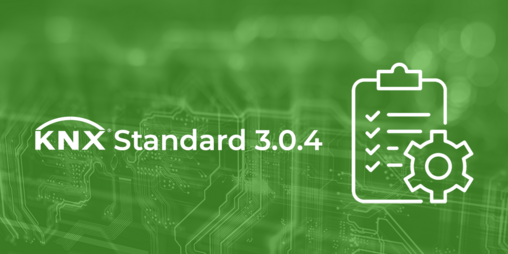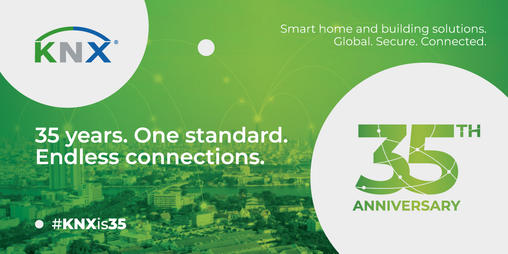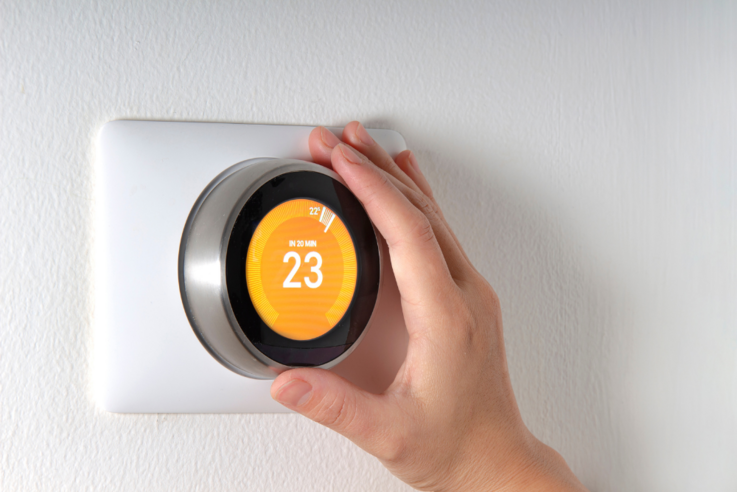06. May 2025
Smart devices vs. AI-powered devices: Is there a difference?

Imagine this. "Your lights turn off when you leave the room. Your heating adjusts before you get home. Did you make those decisions, or your house?" Welcome to the newest era of home automation. While many homes today are equipped with smart devices that follow commands and schedules, the real game-changer is the rise of AI-powered devices—tools that learn, adapt, and think for themselves.
In this blog, we’ll break down what sets these two types of technology apart, how artificial intelligence is reshaping home living across multiple dimensions, and why combining AI-powered devices with a robust infrastructure like KNX is the key to a truly intelligent, future-proof home.
Smart devices vs. AI-Powered devices: Differences and similarities
What sets AI apart from smart?
At first glance, both device types seem to do similar things: they automate, simplify, and make daily life easier. But how they work and what they’re capable of, is fundamentally different.
Smart devices respond to predefined commands. You tell your smart heating when to switch on through your control panel or smart speaker, or schedule your lights to dim at a certain hour. They’re extremely convenient, but function mostly reactively.
AI-powered devices, on the other hand, learn. They use data from your habits, surroundings and behavior to make autonomous decisions, often before you even think about them. For example, a thermostat driven by artificial intelligence doesn’t just follow a schedule. It adjusts itself based on the weather, how long you’ve been home and your historical preferences.
Smart devices are already smarter than you think
While the terms AI-powered and smart device may seem like two separate categories, the truth is: many smart devices today already incorporate artificial intelligence to some extent. The line is blurring—and your home may already be more intelligent than you realize. Let’s make it more concrete with some examples of KNX compatible devices:
Smart thermostats with predictive learning: Devices like the ABB RoomTouch or Theben’s smart room controllers use AI to learn your routines and adjust heating or cooling accordingly. When integrated with a KNX system, they don’t just automate—they predict your comfort needs while optimizing energy use.
AI-enhanced lighting systems: Lighting control systems, such as those from Gira or Jung, can analyze patterns and adjust brightness and color temperature based on time of day, occupancy, or even your mood. All thanks to AI algorithms.
Combined with KNX, these systems create adaptive scenes across your entire home.
Smart meters with predictive Insights: Modern energy meters, such as those from Enertex or Lingg & Janke, do more than measure consumption. Using artificial intelligence, they can analyze and predict trends in energy use, detect anomalies, and trigger automated adjustments within the KNX ecosystem. This helps homeowners save money and improve sustainability without any manual input.
Smart security with object recognition: KNX-compatible surveillance cameras and motion sensors from manufacturers like Basalte or ISE can integrate with AI-based software that distinguishes between a human, pet, or moving tree branch. The result: fewer false alarms and a more reliable security experience.
These examples show that the marriage of AI and KNX is already happening, and it’s delivering smarter, more responsive living spaces.
Why AI-powered devices need a scalable backbone like KNX
To reach their full potential, smart and AI-powered devices need to work together, and that’s where KNX comes in. KNX is the globally recognized open standard for smart home automation, meaning it can connect devices from different brands and technologies into one cohesive system. This makes KNX the perfect foundation for integrating AI-powered features into your home.
Here’s why:
Data sharing across systems: KNX enables devices to communicate across lighting, heating, blinds, security, and more. AI thrives on combining this data. Long-term flexibility: As new AI-powered products enter the market, you won’t need to start from scratch if you already have a KNX ecosystem integrated into your home. KNX allows easy integration of new devices, technologies and brands. Stability and reliability: KNX uses both wired and wireless (KNX RF) infrastructure that remains stable over time, ideal for always-on AI systems.
In other words, artificial intelligence makes the decisions and KNX makes sure the entire home listens.
Smart homes get even smarter with KNX and AI
The difference between smart and AI-powered devices isn’t as much about the technical advancements, it’s about how your home feels. A home that’s capable of both responding to the homeowner’s commands and anticipating their behaviour, that’s the sweet spot of modern smart living. With KNX, you can realise your wildest automation dreams. Our infrastructure ensures everything works together smoothly, securely and sustainably.
Be sure to contact an automation specialist familiar with the KNX standard. On our website you can find a database of certified KNX professionals all over the world.
Highlights
-
 Press
PressKNX Launches KNX Standard Version 3.0.4
KNX Association is proud to announce the release of Version 3.0.4 of the KNX Standard to its manufacturer members. The KNX ... -
 News
NewsThe KNX Journal 2025 is now available
The latest edition of our annual smart home and building solutions magazine has arrived. The KNX Journal 2025 offers ... -
 KNXtoday
KNXtoday#KNXis35: KNX history and evolution
KNX is 35. This worldwide building control standard, initiated by a handful of visionary European manufacturers, now has ...



